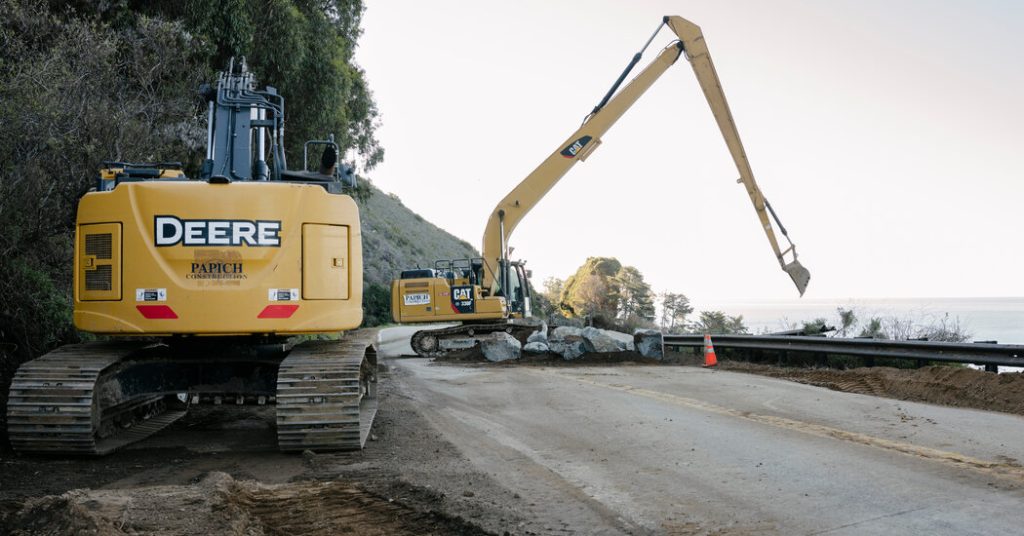A portion of Highway 1 in Big Sur collapsed, stranding about 2,000 mostly tourists. Officials with Caltrans said the southbound highway would remain closed while crews worked on the affected areas. Large chunks of the road fell into the ocean, but fortunately no injuries were reported. Torrential rain near Rocky Creek Bridge caused the collapse. Some traffic began moving on Sunday, and convoys with police escorts were sent to get people out. Many stranded visitors had to sleep in temporary shelters, local accommodations, or in their cars. Another convoy was scheduled for Monday morning if crews were unable to reach everyone by Sunday night.
Monterey County issued a disaster declaration, urging people to avoid the highway to allow for emergency personnel and essential workers to pass through. An unseasonably cold storm system brought rain, flash flooding, and snow to California and other parts of the country. A flood warning was in effect in San Diego, with the storm moving inland. The National Weather Service warned of continued rain on Sunday with a chance of thunderstorms, hail, strong winds, and a risk of tornadoes. Last year, winter storms caused landslides that blocked a 20-mile stretch of Big Sur for weeks. In January 2021, a storm caused similar damage, leading to closures due to mudslides and rockslides.
Over the years, landslides have affected portions of Highway 1, stretching over 650 miles from south of Los Angeles to north of San Francisco. In May 2017, 6 million cubic yards of earth moved after heavy rain, adding 15 acres of coastline. Repairs were made, and the highway reopened a year later. The largest landslide occurred in 1983 at Julia Pfeiffer Burns State Park. Last year, winter storms caused landslides that blocked a 20-mile stretch of Big Sur for weeks. In January 2021, a storm caused similar damage, leading to closures due to mudslides and rockslides. Before that, a major landslide occurred in 1983 at Julia Pfeiffer Burns State Park, farther north on Highway 1.
The scenic Highway 1 in Big Sur, California, suffered a collapse stranding around 2,000 motorists, mostly tourists. Caltrans officials announced the closure of the southbound highway for repairs after large chunks of the road fell into the ocean due to torrential rain. Efforts were made to get people out and provide shelters for those stranded, with convoys sent with police escorts. Monterey County issued a disaster declaration, urging people to stay away from the area to allow for the safe passage of emergency personnel. An unseasonably cold storm brought rain, flash flooding, and snow to California, with continued precipitation and the risk of thunderstorms and tornadoes.
Over the years, landslides have affected portions of Highway 1, a 650-mile stretch passing through Big Sur and the Golden Gate Bridge. In 2017, a significant landslide occurred after heavy rains, adding 15 acres of coastline. The highway underwent repairs and reopened a year later. Last year, winter storms caused extensive damage to Big Sur, leading to closures due to mudslides and rockslides. The largest landslide occurred in 1983 at Julia Pfeiffer Burns State Park. The recent collapse highlights the ongoing challenges faced by the scenic Highway 1 due to natural disasters and severe weather conditions.


